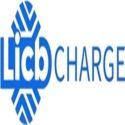Notifications

6 minutes, 47 seconds
-117 Views 0 Comments 0 Likes 0 Reviews

LiCB Charge, a leading EV chargers manufacturer in China, delivers reliable AC and DC electric vehicle charging stations along with comprehensive charging solutions.
As the world shifts toward sustainable transportation, electric vehicles (EVs) are leading the charge. While EVs bring benefits such as lower emissions, reduced fuel costs, and quieter rides, the supporting infrastructure is still unevenly distributed — especially for renters. Homeowners generally have the freedom to install EV chargers, but renters face unique challenges.
With 44 million U.S. households renting, ensuring equitable access to EV charging is essential for the transition to succeed. Apartment EV charging is no longer a future luxury — it’s an immediate necessity. With EVs making up 8.6% of vehicle sales today and expected to reach 13–29% by 2050, multifamily communities must act now to provide this critical amenity.
Level 1 uses a standard 120-volt outlet (like most household appliances). While widely accessible, it’s very slow — adding about 3–5 miles of range per hour, requiring over 50 hours for a full charge. This makes it impractical for daily use, especially for those with longer commutes.
Level 2 chargers operate on 240 volts and are the most popular home charging solution. Delivering up to 19 kWh, they add 15 to 40 miles of range per hour, fully charging most EVs in 4–10 hours. For apartment communities, Level 2 offers the best mix of feasibility, performance, and tenant satisfaction.
Level 3 chargers can charge an EV to 80% in under an hour, operating at 400 to 1,000 volts. While great for highways and public hubs, their high costs and infrastructure needs usually make them unsuitable for apartment buildings — except in large urban developments with heavy traffic.
Fear of running out of charge with no nearby station — known as range anxiety — remains a top EV adoption barrier. Access to reliable apartment charging reassures renters they can depend on their EV daily.
Charging at home lets renters plug in overnight and start the day with a full battery, eliminating the hassle of scheduling around public chargers or workplace availability.
Renters often lack the autonomy to install chargers, relying on landlords to provide infrastructure. Offering EV charging amenities removes a significant barrier to EV adoption among renters and increases property appeal.
Public charger fees vary by provider, time, and location. Apartment charging offers more predictable and potentially lower costs, especially when integrated into lease agreements or subsidized by landlords.
Older buildings may lack sufficient electrical capacity for multiple chargers.
Solution: Start with a professional electrical assessment. Use load management and smart charging systems to balance power among vehicles and avoid costly upgrades.
Assigned parking spots complicate access to chargers.
Solution: Begin with a limited number of shared or reserved chargers. Use waitlists, reservation apps, or monetization to manage demand fairly and offset costs.
Weatherproofing, cable length, and connectivity present installation challenges outdoors.
Solution: Choose weather-resistant chargers mounted on bollards or walls. Plan conduit routing carefully and use smart chargers with cellular or Wi-Fi connectivity for reliable operation.
Upfront installation costs can deter property owners.
Solution: Take advantage of government grants, tax incentives, and utility rebates. Offset costs with tenant charging fees or partnerships with third-party charging providers.
EV infrastructure appeals to environmentally conscious renters, boosting occupancy and tenant loyalty.
Green amenities like EV charging increase property desirability and long-term value.
Charging stations can generate passive income through per-kWh or subscription fees.
For the EV revolution to be truly inclusive, renters cannot be left behind. Multifamily properties must invest in EV infrastructure now — from urban high-rises to suburban complexes.
With modern technologies, financial incentives, and thoughtful planning, installing chargers is more achievable than ever. Early adopters gain a competitive edge, satisfy tenants, and contribute to a cleaner future.
Apartment EV charging is no longer optional; it’s a necessity. It reduces range anxiety, enhances convenience, drives EV adoption, and elevates property appeal. Even older buildings can adapt with smart solutions and incentives.
As EVs become mainstream and cities push green initiatives, apartment charging will shift from a luxury to an expectation. Property owners, managers, and planners must act now — not just to stay competitive but to lead the charge toward sustainable living.Know more about Google SEO Directory
China EV Chargers EV Charger Manufacturer Smart EV Chargers Electric Car Chargers Electric Vehicle Chargers Electric Car Charging Stations

